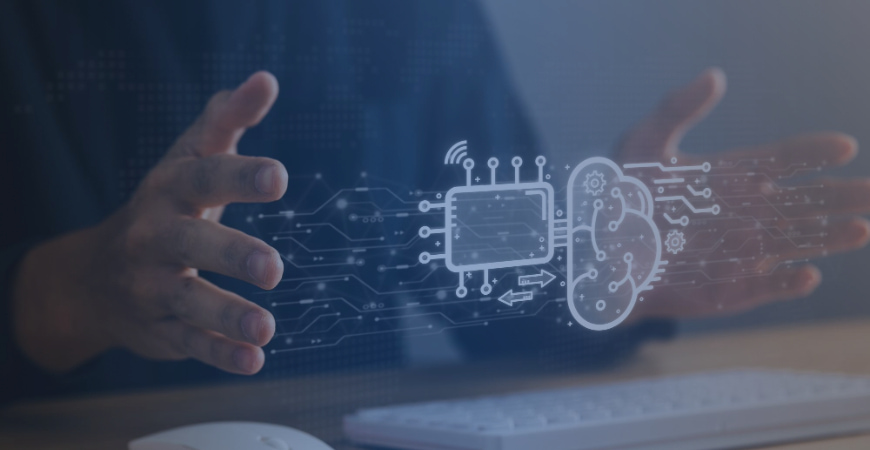Applying machine learning to process automation
Implementing machine learning in process automation can provide various advantages to businesses. Here, we look at its use cases and benefits for enterprises.
The practice of applying Machine Learning (ML) models to real-world situations through automation is known as Automated Machine Learning. It automates the selection, construction, and parameterization of machine learning models in particular. Since then, Artificial Intelligence (AI) and its subsets have become clever additions to the field of automation, attempting to tackle problems that go beyond simply taking over repetitive tasks.
Machine learning is one form of applied AI that is now being used in Business Process Automation (BPA) and Robotic Process Automation (RPA). Machine learning is the use of artificial intelligence to enable systems to learn and make decisions without being specifically programmed to do so. In RPA, ML can move robots beyond repetitive process execution and enable them to perform jobs that previously needed human decision-making. Artificial Intelligence skills may also be used to improve data integrity, give structure to unstructured and semi-structured data sources, increase business insights, and improve automated execution.
In this blog, we’re taking a closer look at the role of machine learning in automation.
Machine Learning in Process Automation
The applications of machine learning are expanding rapidly to help organizations and society solve real-world issues. ML works on the basis of encapsulating a vast quantity of data (or knowledge) into some form of a mathematical model. The model may be used to solve issues by using the knowledge it contains.
Machine learning can be applied to a wide range of problems where large amounts of historical data can be used to predict or make decisions in specific areas. It should be highlighted that, unlike constructing an algorithm, it is based on the creation of a knowledge base. However, the ML technique is particularly efficient in dealing with such problems.
Process automation has evolved to provide solutions to assist, simplify, and expedite processes. It all started with robotic process automation based on automating step-by-step workflows in a single platform or application. RPA has transformed the way people work today, with millions of bots working alongside humans.
The majority of RPA implementations make use of software bots that automate operations based on pre-defined or established criteria. As corporate processes became more sophisticated, artificial intelligence technology such as machine learning began to impact how bots might accomplish more. With the inclusion of ML, bots continually learn from human activities, emulating human cognition to a great extent. The more training and learning supplied, the closer machines can get to reading, visualizing, learning, and thinking like humans.
How to apply machine learning to process automation
The simplicity with which a workflow or process can be automated is RPA’s biggest strength. However, it has a restriction in that it cannot be automated if it requires decision-making supported by knowledge application. This is where machine learning comes in; it assists in the creation of a knowledge base based on past data, which is then used for decision-making and prediction.
Integrating Machine Learning with robotic process automation can result in strong automation solutions. Many RPA software suppliers are striving to include this functionality inside the tool itself in order to broaden its capabilities. However, because ML is a new subject, it needs the expertise of engineers with extensive knowledge and abilities in order to construct correct ML models.
Improving the Execution of Automation
Algorithms for machine learning can also be used to improve the delivery of automated services. Algorithms can be used in computer vision, for example, to teach robots how to detect and interact with onscreen fields and components. Machine learning models are also employed for error management, and recursion is frequently used to minimize code complexity and optimize robot runtime.
Another growing use of machine learning in automation is task mining. In this case, robots are taught to assess daily task information obtained from employees in order to create process maps and recommend procedures for automation based on the maximum return on investment (ROI.) This application can be a mixed bag since it needs extensive training to reach the proper balance between ROI, degree of effort, and overall suitability for automation.
Attended Automation
Attended automation, also known as Remote Desktop Automation (RDA), is when robots work alongside people to augment their job or help them make better decisions. Machine learning may be used to absorb data from several sources in real-time, allowing robots to assist humans in determining the optimal next step in their workflow.
Machine learning may also be integrated with other cognitive skills, such as Natural Language Processing (NLP), to allow robots to emulate the easier decision-making inside a human’s workflow, bringing us even closer to end-to-end automation.
Conclusion
From the above breakdown of process automation technologies, we can surmise that investing in machine learning to augment BPA and RPA can provide various advantages to businesses. It is a powerful and continuously evolving technology, and its ramifications will only grow in the future years. As a result, it is a worthwhile improvement over manual processes and a crucial step towards helping your teams become more productive. Machine learning algorithms can help to reduce risk and eliminate the cost of operating clunky, outdated software.
Reimagine business efficiency with automation and data solutions built by VBeyond Digital.




